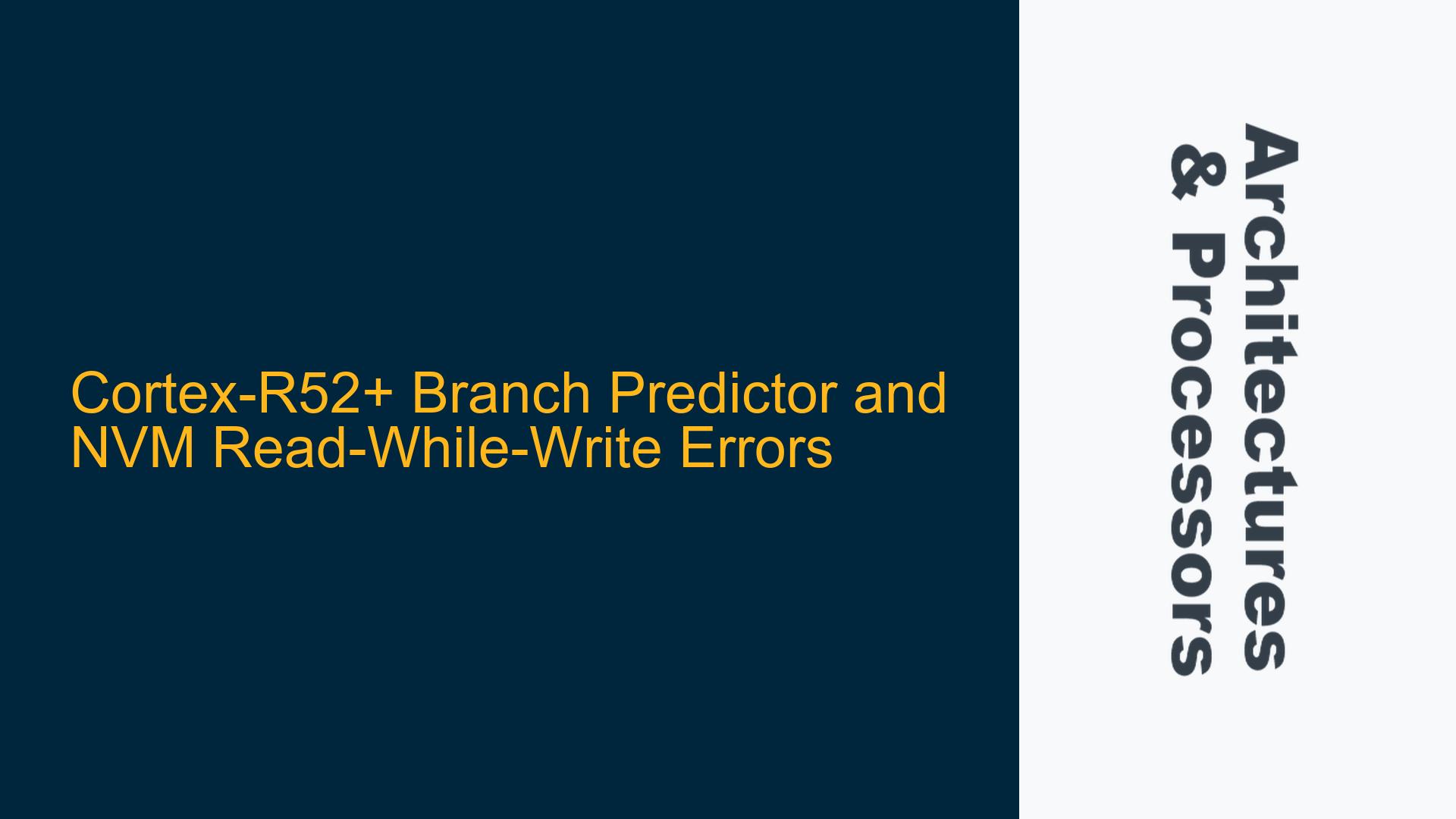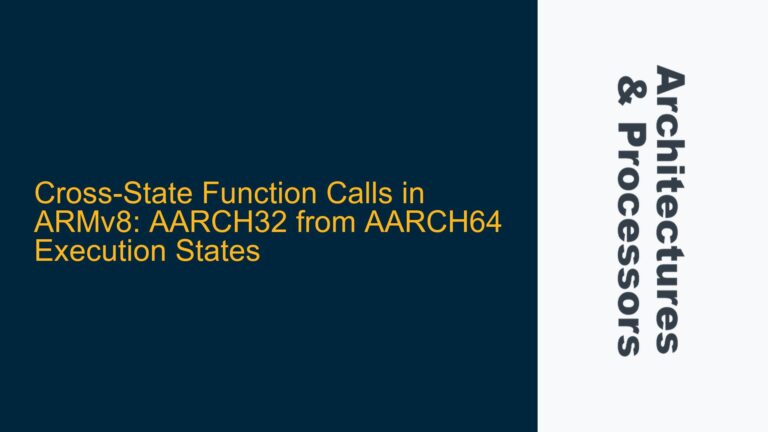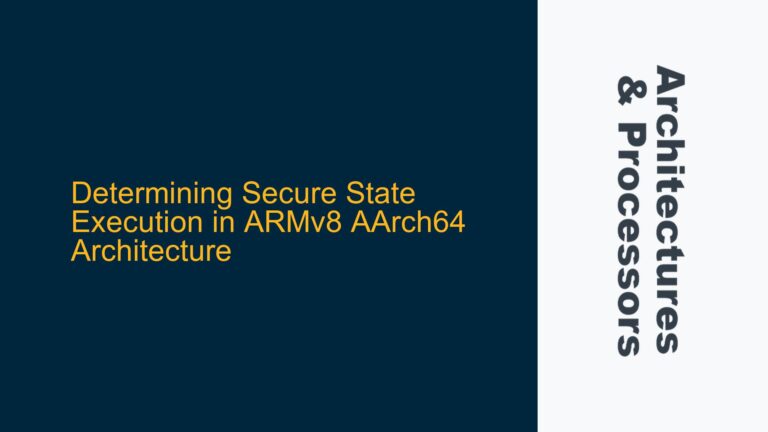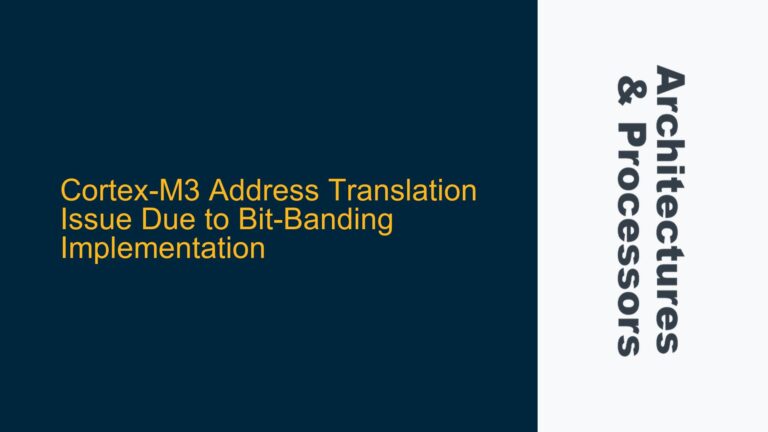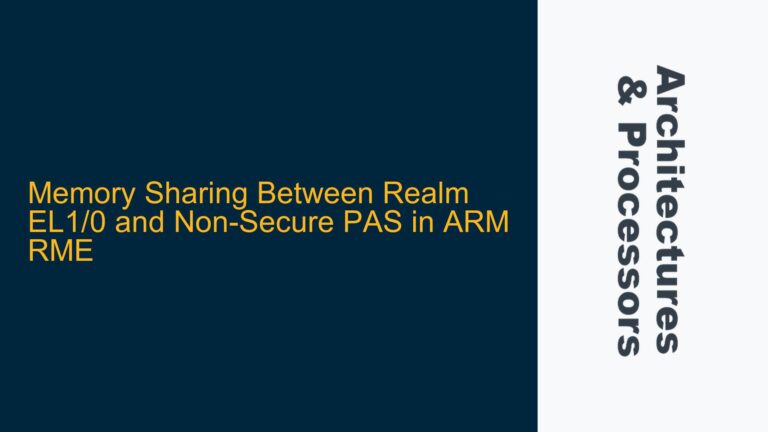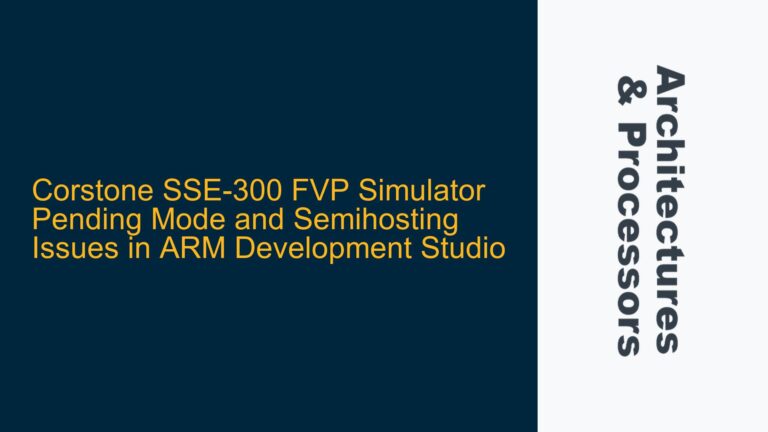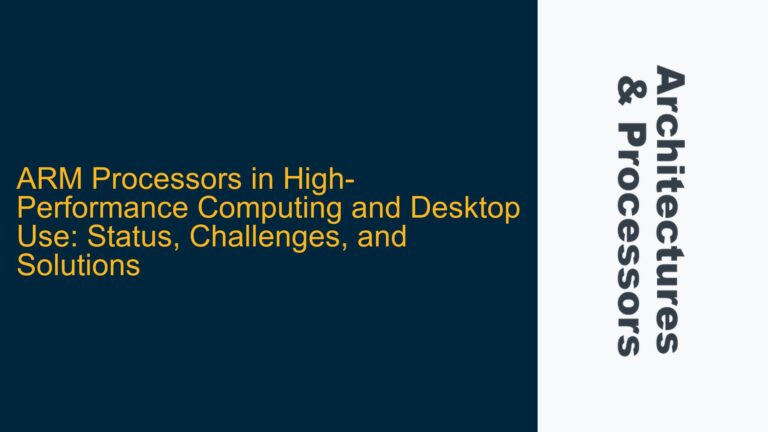ARM Cortex-R52+ Branch Prediction and NVM Access Conflicts
The Cortex-R52+ processor, like many modern ARM cores, employs advanced features such as branch prediction, speculative execution, and prefetching to optimize performance. However, these features can lead to unintended side effects when interacting with Non-Volatile Memory (NVM), particularly during Read-While-Write (RWW) operations. In this scenario, the core initially executes code from NVM, transitions to RAM for specific operations, and then returns to NVM for further execution. The issue arises when the branch predictor is enabled, leading to RWW errors. Disabling the branch predictor (IMP_BPCTLR) resolves the issue, but this is not a sustainable solution as it sacrifices performance.
The root cause of the problem lies in the interaction between the branch predictor, speculative execution, and the timing of NVM accesses. When the branch predictor is active, it may initiate speculative fetches from NVM, even when the core is executing code from RAM. These speculative accesses can conflict with ongoing NVM operations, such as writes or erases, leading to RWW errors. The problem is exacerbated when the I/D cache is disabled, instruction speculative access is disabled (ISPECDIS = 1), and instruction prefetch is disabled (L1IPFCTL = 0). These settings reduce the core’s ability to buffer or manage speculative accesses, making it more susceptible to timing-related conflicts.
Speculative Access and MPU Configuration Mismatch
The primary cause of the RWW errors is speculative access to NVM regions that are not properly protected by the Memory Protection Unit (MPU). The ARM architecture allows speculative data accesses to any region marked as Normal and speculative instruction fetches to any region marked as executable. If a region should not be speculatively accessed, it must be explicitly marked as Device memory and set to Execute Never (XN). In this case, the NVM region is likely still configured as Normal memory, allowing speculative accesses even when the core is executing from RAM.
The branch predictor, when enabled, may initiate speculative fetches based on predicted branch targets. These fetches can occur before the NVM operation is complete, leading to conflicts. For example, if the branch predictor predicts a return to NVM code after the RAM operation, it may prefetch instructions from NVM while the NVM is still busy with a write or erase operation. This prefetch can trigger an RWW error if the NVM cannot handle simultaneous read and write operations.
Additionally, the timing of cache maintenance operations and MPU reconfiguration plays a critical role. If the MPU is not reconfigured to prevent speculative accesses to NVM before the RAM operation begins, speculative fetches may still occur. Similarly, if cache maintenance operations are not performed correctly, stale data or instructions may be accessed, leading to unpredictable behavior.
Implementing MPU Reconfiguration and Cache Maintenance
To resolve the RWW errors, a systematic approach involving MPU reconfiguration, cache maintenance, and careful timing of operations is required. The following steps outline the recommended solution:
-
MPU Reconfiguration Before RAM Execution: Before jumping from NVM to RAM, reconfigure the MPU to mark the NVM region as Device memory and set it to Execute Never (XN). This prevents speculative instruction fetches and data accesses to the NVM region while the core is executing from RAM. The MPU configuration should be updated to reflect the new memory attributes, ensuring that no speculative accesses can occur.
-
Cache Maintenance Operations: Perform cache maintenance operations to ensure that any cached data or instructions from the NVM region are invalidated. This prevents the core from accessing stale data or instructions during the RAM operation. Use the Data Synchronization Barrier (DSB) and Instruction Synchronization Barrier (ISB) instructions to ensure that the cache maintenance operations are completed before proceeding.
-
NVM Operation Completion Check: During the RAM operation, ensure that the NVM operation is complete by checking the appropriate status flags. This ensures that the NVM is ready for subsequent accesses before the core returns to NVM execution.
-
MPU Reconfiguration Before Returning to NVM: Before jumping back to NVM, reconfigure the MPU to restore the original memory attributes for the NVM region. This allows the core to access the NVM region normally once it resumes execution from NVM. Again, use DSB and ISB instructions to ensure that the MPU reconfiguration is complete before proceeding.
-
Branch Predictor Management: While disabling the branch predictor resolves the issue, it is not a recommended long-term solution due to the performance impact. Instead, ensure that the MPU is configured correctly to prevent speculative accesses to the NVM region. If necessary, use the IMP_BPCTLR register to fine-tune the branch predictor behavior, but avoid disabling it entirely.
-
Timing Analysis and Optimization: Analyze the timing of the NVM operations, MPU reconfiguration, and cache maintenance to ensure that there are no overlaps or conflicts. Use performance counters and debugging tools to monitor the core’s behavior and identify any timing-related issues. Optimize the sequence of operations to minimize the risk of RWW errors.
By following these steps, the RWW errors can be effectively mitigated without sacrificing the performance benefits of the branch predictor and speculative execution. The key is to ensure that the MPU is configured correctly to prevent speculative accesses to the NVM region during critical operations, and to perform cache maintenance and timing analysis to avoid conflicts.
In conclusion, the Cortex-R52+ branch predictor and speculative execution features can lead to RWW errors when interacting with NVM, but these issues can be resolved through careful MPU configuration, cache maintenance, and timing optimization. By understanding the underlying causes and implementing the recommended solutions, developers can ensure reliable and efficient operation of their embedded systems.
